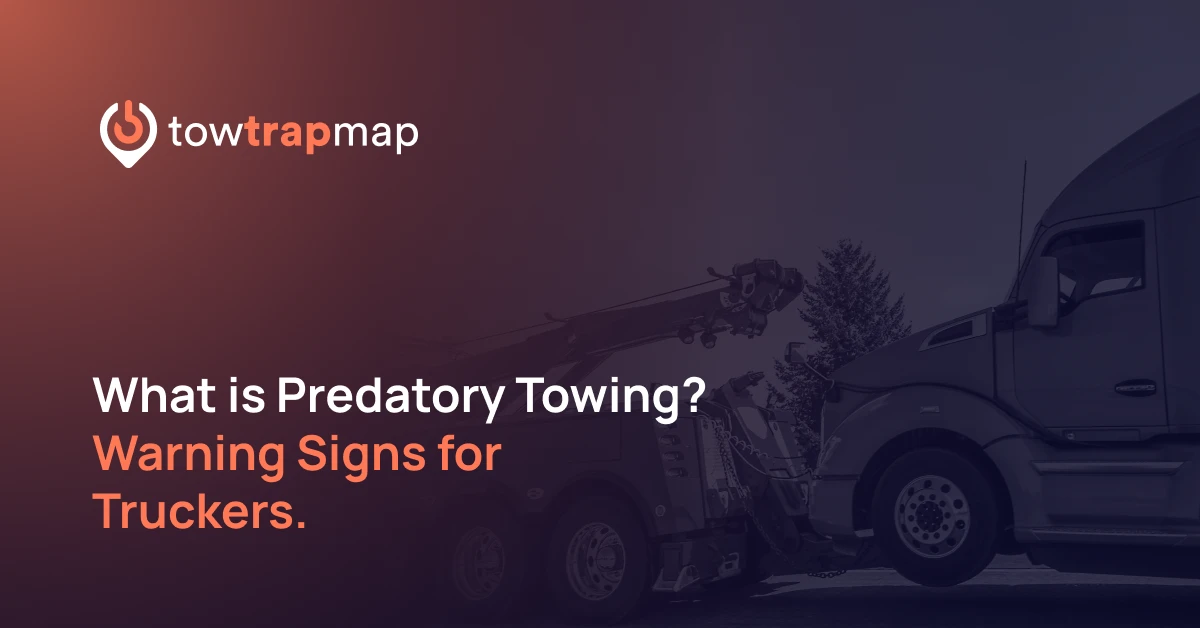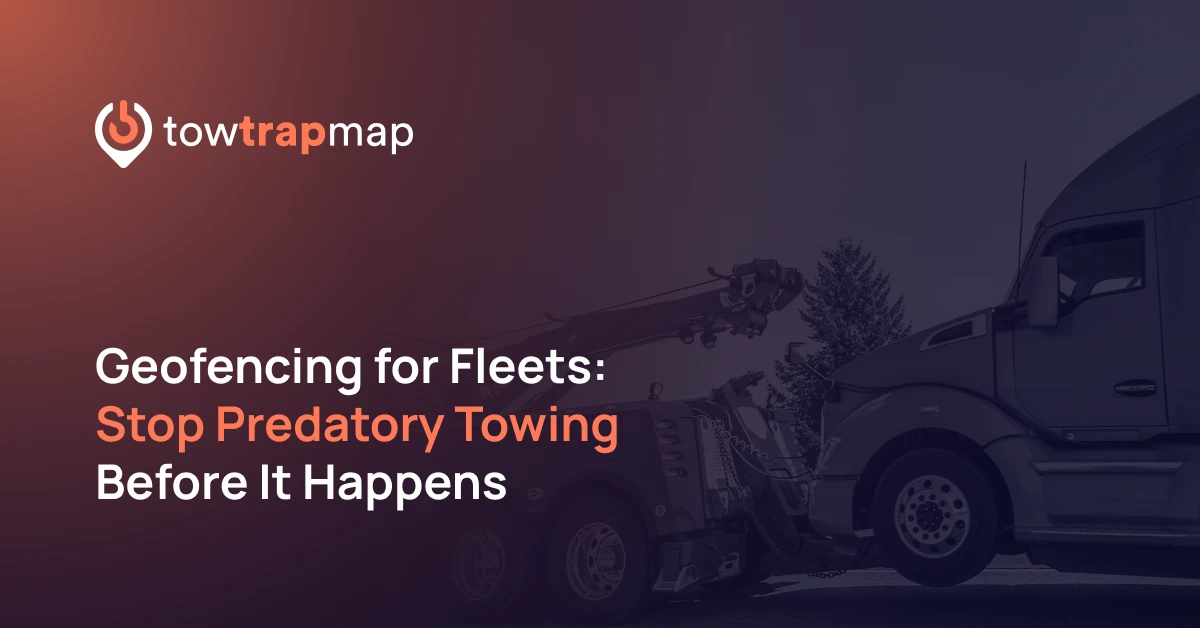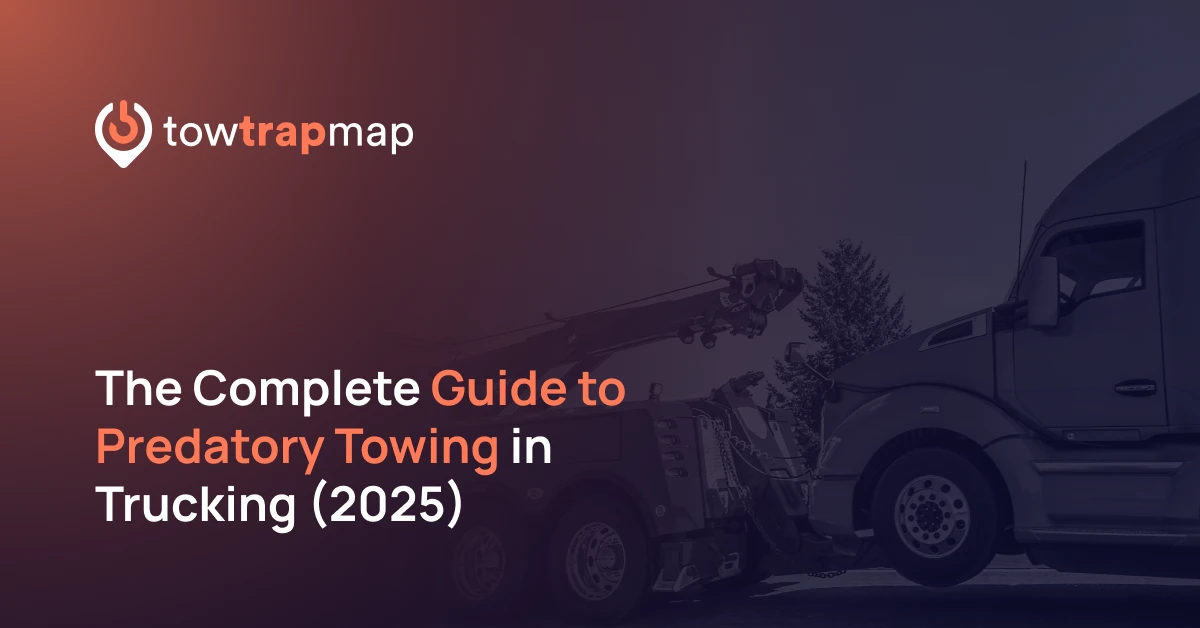Predatory towing is one of the most frustrating and expensive problems facing truck drivers and fleets across North America. Unlike legitimate towing—where a vehicle is moved for safety or law enforcement reasons—predatory towing exploits truckers with hidden signs, misleading rules, and excessive fees.
For drivers, this can mean coming back to find a rig missing after a rest break, with thousands of dollars demanded to release it. For fleets, the costs add up quickly: tow fees, lost loads, downtime, and angry customers.
This guide explains what predatory towing is, why truckers and fleets are especially vulnerable, and the warning signs every driver should know. By learning how to spot a tow trap, you can avoid costly situations—and by reporting them, you help protect the entire trucking community.
What is Predatory Towing?
Predatory towing is when a vehicle is unfairly towed for profit, not for safety or law enforcement reasons. It often involves hidden or unclear signage, misleading parking rules, or excessive release fees. Truck drivers and fleets are common targets because of limited parking options and high tow costs.
Predatory towing occurs when a vehicle is removed not for safety, but for profit. Tow companies working with property owners or operating independently set up situations where drivers are almost guaranteed to get towed.
The difference between legitimate towing and predatory towing is intent.
Legitimate towing: removing vehicles parked illegally in dangerous spots or blocking access.
Predatory towing: trapping drivers in unclear, poorly marked, or unfair conditions, then charging sky-high fees to release the truck.
The practice often skirts legality, exploiting gray areas in signage and property laws.
Why Truckers and Fleets Are at Risk
Truck drivers are particularly exposed to predatory towing for a few key reasons:
Limited parking: Across the U.S. and Canada, there is a severe shortage of safe truck parking spaces. Drivers often park wherever they can when out of hours.
Targeted lots: Predatory tow operators know truckers have few options and patrol areas where drivers are forced to stop.
High-value vehicles: A single truck plus trailer is worth towing—the release fee can easily exceed $1,000. For fleets with dozens or hundreds of vehicles, even a few predatory tows per year add up to massive costs.
Common Predatory Towing Tactics
Hidden or unclear signage
Signs are placed behind trees, far from the lot entrance, or written in tiny text so drivers don’t see them.
Tow traps in private lots
Lots near rest areas, diners, or repair shops may look safe, but some property owners partner with towing companies to profit from unsuspecting truckers.
Excessive fees and cash-only demands
Charges go far beyond regulated towing rates, with companies demanding cash-only payments before releasing the truck.
Rapid patrols and spotters
Tow trucks circle high-risk lots, waiting for drivers to step away from their rigs—even for just a few minutes.
Poorly marked “No Parking” signs
If signage is faded, hidden, or not visible at night, it may be deliberate.
Confusing or vague wording
Signs that don’t clearly define who can park are a red flag.
Tow trucks nearby
If you notice trucks circling or sitting near a lot, that area may be under active predatory monitoring.
Word of mouth
Other drivers’ experiences are often the most reliable. Communities like TowTrapMap make these reports visible and accessible to everyone.
Know a tow trap location? Protect your fellow drivers.
The Cost of Predatory Towing for Fleets
For fleets, the real cost of predatory towing goes far beyond the release fee.
Financial: Tow bills can run into thousands, especially for heavy trucks.
Operational: Lost time leads to missed deliveries and disrupted schedules.
Reputation: Customers lose trust when loads are delayed.
Driver morale: Repeated towing incidents frustrate drivers and increase turnover risk.
It’s not unusual for a medium-sized fleet to lose tens of thousands of dollars each year to preventable towing incidents.
Read our full breakdown of the true cost of predatory towing for fleets here.
How Fleets and Drivers Can Protect Themselves
For drivers
Always scan for signs when entering a lot.
Avoid lots that seem too quiet or poorly lit.
Double-check if a space is authorized for truck parking before leaving your cab.
Share reports of suspicious lots with other drivers.
For fleets
Educate drivers on common hotspots and warning signs.
Use mapping tools to highlight high-risk areas.
Leverage geofencing technology to alert drivers before they enter predatory zones.
TowTrapMap turns driver reports into geofence alerts for fleets. Start protecting your trucks today
How Crowdsourcing Helps Fight Predatory Towing
The trucking industry has strength in numbers. By pooling knowledge, drivers can outsmart predatory tow companies.
TowTrapMap is built for exactly this purpose:
Drivers and fleets submit reports through a simple form.
Each report is reviewed for accuracy.
Verified hotspots appear on the TowTrapMap as pins and geofenced zones.
Over time, this database grows into a powerful tool that helps drivers avoid risky lots—and gives fleets the data they need to prevent thousands in towing losses.
As we like to say: Every report protects the next driver.
Conclusion
Predatory towing is a growing challenge for the trucking industry, costing drivers and fleets millions each year in unfair fees and lost productivity. The tactics are often subtle—unclear signs, quick patrols, or vague rules—but the impact is severe.
By knowing what predatory towing is, understanding the warning signs, and sharing information, drivers and fleets can fight back.
TowTrapMap makes it easy to report tow traps, see verified hotspots, and—soon—automatically integrate geofences into fleet telematics systems like Samsara, Geotab, and Motive.



